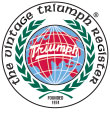Brake Bleeding
by Ken Streeter,
with input from Scott Fisher, Greg Meboe, and Gary Schneider.
For a description of the basic procedure, you would be best off checking your shop manual. However, if you are having problems with bleeding your brakes, the below hints may help!
Hints on Brake Bleeding.
- You’ve just rebuilt your master cylinder, or have installed a new one, and are having trouble bleeding all the air out.
bench bleeding your master cylinder
. This has the advantages of being possible off the car, as well as isolating the problem to the master cylinder (if the bench bleeding is completely unsuccessful.)
- Getting no fluid out of a bleed nipple
This is going to sound really simple, but is the master cylinder topped off with fluid? It is is surprisingly easy to forget to do this!
If you have fluid in the master cylinder, try removing the bleed nipple entirely and see if you get flow under pedal pressure.
- Case 1. Fluid squirts from line: You have a blocked or corroded bleed nipple, which will need to be cleaned out with an awl or similar pointy tool, or replaced.
- Case 2. Still no fluid: Unscrew the hose at the car side so it doesn’t twist or kink, and see if you get a stream of fluid under pedal pressure. When testing, have a wadded rag over the end of line to catch the fluid – the pressure is great enough to spray the other side of the garage, get in your eye or on your paint, etc. Also, press on the pedal about a dozen times when doing this; if the fluid all drained out of the system before you started bleeding the brakes, (if you overhauled some part of the brake system) it can take a surprisingly long time to pump fluid throughout the system.
- Soft brakes even after bleeding
You probably still have air in the system somewhere. If you have had parts of the brake system disconnected, ensure that the bleed nipples for the wheel
https://tramadolhealth.com
cylinders and front calipers are at the
top
, so that the air can all escape during the bleeding process. (The air bubbles rise to the top.)
- Front or Rear brakes bled, but no luck at other end
Your Pressure Differential Warning Actuator (PDWA) may be tripped. This would close off either the front or back hydraulic circuit and leave the other functional. It’s easy to trip this when bleeding the brakes. If this is your problem, the brake warning light will glow brightly when the ignition is turned on. (Unless of course your brake warning light switch or bulb is not working…)
If the PDWA is tripped, the shuttle in the PDWA can be re-centered by the following procedure:
- Open a bleed nipple on the brake system that does work.
- With the ignition switch on, observe the brake warning light. Press on the brake pedal carefully and watch the light. It and the oil pressure light should dim as the switch centralizes. You should also hear a click. Do not press too much or too fast, or the switch goes past center. Just keep repeating the proceedure until it works, varying the wheel/brake circut until you figure out which way the switch was on.
If the above absolutely does not work for you, the PDWA can be mechanically recentered, but is more difficult, involving partial disassembly of the PDWA unit.
- You have tried all of the above, but still have no luck!
You may want to invest in a simple vacuum pump to bleed the brakes. One such tool, available for about $20 at Walmart is the “Mityvac Vacuum Pump / Brake Bleeding Kit.” The pump is applied to a bleed nipple, and pulls fluid through the system. This technique has the advantage that the master cylinder does not require “priming” in order to get the bleeding process started.
In my experience, the vacuum pump does a good job and is a one-person operation (with the exception of checking the results in the “conventional” fashion). As always, your mileage may vary.
Ken Streeter, streeter@sanders.com
